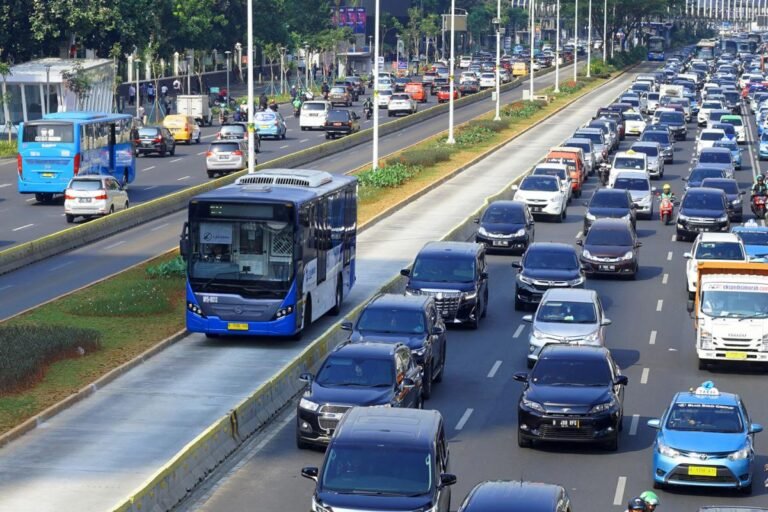Has progress been made?
Despite the rise of sustainable transport on the global agenda, the 2020 UN Sustainable Development Goals Report notes that only half of the world’s urban population has easy access to public transport, according to 2019 data from 610 cities in 95 countries. The report measures accessibility as the proportion of residents within a 500-meter walking distance of low-capacity transit systems (buses, trams) and within 1,000 meters of high-capacity transit systems (trains, subways, ferries). To compensate, many cities have turned to informal transit systems, which often lack consistency and safety features.
However, some progress has been made. Sharing the Road, an initiative led by UNEP in 2008, calls for investment in walking and cycling infrastructure, including links with public transport systems. The initiative has strengthened non-motorized transportation programs in Mexico, Brazil, Ghana, Nigeria, Zambia, Ethiopia, Kenya, Rwanda, Burundi, Uganda and Indonesia. It has also collaborated with the Institute for Transport and Development Policy (ITDP) to create a toolkit for developing non-motorized policies and strategies (FIA Foundation, 2020).
Other developments include the creation of more “walkable cities.” In Buenos Aires, the road that previously had 20 traffic lanes is now designated in the middle for buses. When the city made the change a few years ago, commute times shrunk dramatically. Buses also no longer need to use busy side streets, freeing up about 100 blocks for pedestrian priority areas where car traffic is restricted (Peters, 2019). Likewise, in Cuenca, Ecuador, the historic center of the city is being transformed by providing specific pedestrian access and priority access to public transport. In Coimbatore, India, and Lisbon, Portugal, pedestrians and cyclists have priority access, with a shift away from a car-oriented society towards an increasing focus on pedestrians. In Guangzhou, China, there is a new 500 km (311 mi) greenway for pedestrians and cyclists (ITDP, 2020).
Cycling has been a major focus in many cities, from implementing bike share programs, to increasing bike lanes and bike parking. The city of Niteroi in Rio de Janeiro, Brazil, Frankfurt, Germany, and Guatemala City, Guatemala, are investing in cycling infrastructure. Kampala, Uganda, and Windhoek, Namibia, have established bike-sharing systems to support social progress, especially for the poor. Many cities see improvements in cycling and pedestrian spaces as going hand in hand. For example, Lviv, Ukraine, released a complete street design, improving bike lanes to the point where public transit users stopped driving to bus stops (ITDP, 2020).
The Partnership for Clean Fuels and Vehicles (PCFV) coordinates programs to reduce vehicle and road transport emissions in developing countries by promoting clean fuels and vehicles. When the PCFV program was launched at the World Summit on Sustainable Development in 2002, most developing and transition countries were still using leaded fuel. Today, only six use leaded fuel.
In Egypt, the vehicle scrapping and recycling program enabled taxi owners to voluntarily hand over their old, highly polluting vehicles for scrapping and recycling in exchange for new, more environmentally friendly vehicles. The new taxis were purchased from pre-registered car dealers at a discounted price and with financing facilities. By the end of 2018, about 45,000 taxis had been delivered, scrapped and recycled in Cairo alone, reducing emissions by about 350,000 tons (World Bank, 2018).
According to the IEA, electric micromobility options are also expanding rapidly, with shared electric bikes, electric assist bikes, and electric scooters now available in more than 600 cities in more than 50 countries. An estimated 350 million two- and three-wheel electric vehicles, mostly in China, make up 25% of those in circulation worldwide. Many Chinese cities have banned two-wheelers equipped with internal combustion engines.





